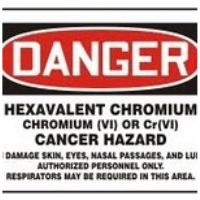State Proposes Carcinogen Standard 500 Times Less Strict than CalEPA “Goal”

Fourteen years after the state began a process to set standards for the known chemical carcinogen chromium-6—made infamous by the movie Erin Brockovitch—it finally settled on one 500 times more lenient than the safe, non-enforceable level determined by the California Environmental Protection Agency (CalEPA).
Environmentalists were as horrified by the decision as water treatment officials were gratified. Attorney Avinash Kar, with the Natural Resources Defense Council, told the Los Angeles Times, “Five hundred times higher than safe levels is not protective of public health,” while Ramon Abueg, a chief assistant general manager for Glendale Water and Power, seemed almost giddy. “We're happy and pleasantly surprised,” he said.
State officials made no secret that determining a maximum contaminant level (MCL) for chromium-6 would be a balancing act that took cost into consideration. The California Department of Public Health (CDPH) press release announcing the proposed standard said it would cost public water treatment systems $156 million to implement.
Chromium-6, also known as hexavalent chromium, was found in the drinking water of at least 500 California communities in 51 of the state’s 58 counties between 2000 and 2004. Trace amounts are known to cause cancer but the state refused for years to conjure up a standard until CalEPA made its recommendation.
CalEPA finally suggested a “goal” in 2011 of .02 parts per billion (ppb). The recommendation released by the CDPH Thursday is 10 parts per billion. A 2010 study by the Environmental Working Group found chromium-6 levels of 1.69 ppb in Riverside and 1.34 ppb in San Jose, both of which made the Top 5 in the United States.
The movie Erin Brockovich, released in 2000, chronicled the experience of residents in the small town of Hinckley, California, who were exposed to chromium-6 when Pacific Gas & Electric (PG&E) used the heavy metal to prevent rust in water towers. The water seeped into the groundwater and caused health problems that included bronchitis, asthma and lung cancer. PG&E settled with Hinckley residents in 1996 for $333 million.
There is some evidence that chromium-6 can damage DNA. Other studies have linked it to male reproductive harm, liver toxicity and blood disorders. The chemical is on California’s Prop. 65 list of substances known to cause cancer and reproductive harm. It has long been known as dangerous if inhaled and in 2007 the federal government determined that it’s not OK to eat it either. There is no federal standard for chromium-6.
The MCL standard will be open for public comment before a final one is adopted and, once imposed, will be reviewed every five years.
California thus becomes the first state in the nation with a proposed standard for chromium-6. The CDPH trumpeted in its press release that California was the first state to pass a law requiring such a standard—in 2001. Twelve years later, the department’s work is nearly complete.
–Ken Broder
To Learn More:
State Tries to Limit Carcinogen in Drinking Water (by Stephanie M. Lee, San Francisco Chronicle)
Limit Urged for Cancer-Causing Chromium in California Drinking Water (by Bettina Boxall, Los Angeles Times)
California Department of Public Health Fails to Set Safe Drinking Water Standard for Hexavalent Chromium (Natural Resources Defense Council)
EPA Allowed Chemical Industry to Control Panel Assessing Cancer Danger in Drinking Water (by Noel Brinkerhoff and Danny Biederman, AllGov)
Lawsuit Claims One-Third of California Drinking Water Contaminated with Cancer-Causing Chemical (by Ken Broder, AllGov California)
California Proposes Nation’s First Drinking Water Standard for Hexavalent Chromium (California Department of Public Health)
Chromium-6 in Drinking Water: MCL Update (California Department of Public Health)
- Top Stories
- Controversies
- Where is the Money Going?
- California and the Nation
- Appointments and Resignations
- Unusual News
- Latest News
- California Forbids U.S. Immigration Agents from Pretending to be Police
- California Lawmakers Urged to Strip “Self-Dealing” Tax Board of Its Duties
- Big Oil’s Grip on California
- Santa Cruz Police See Homeland Security Betrayal in Use of Gang Roundup as Cover for Immigration Raid
- Oil Companies Face Deadline to Stop Polluting California Groundwater





